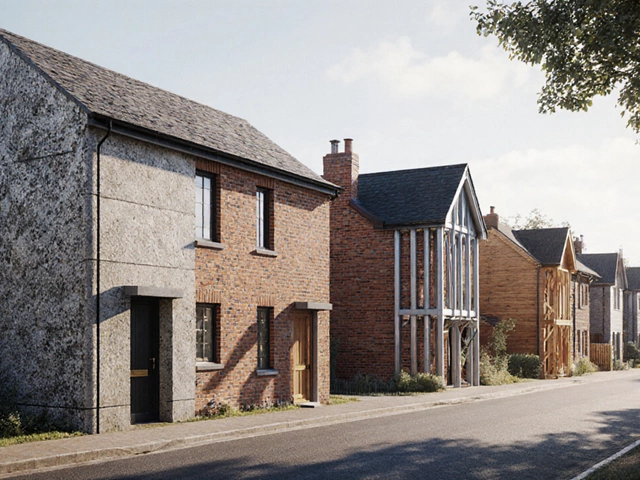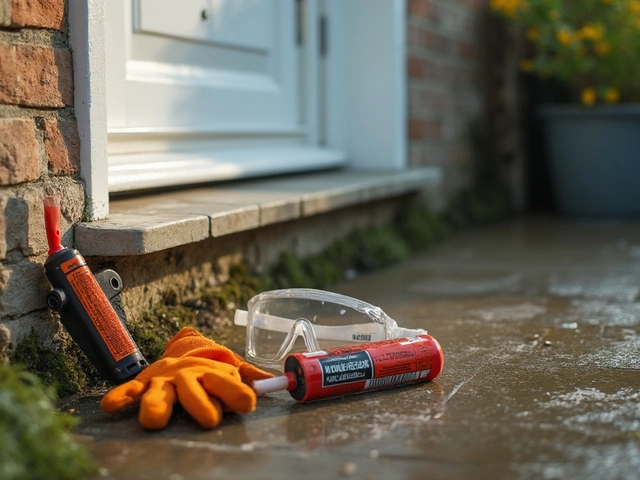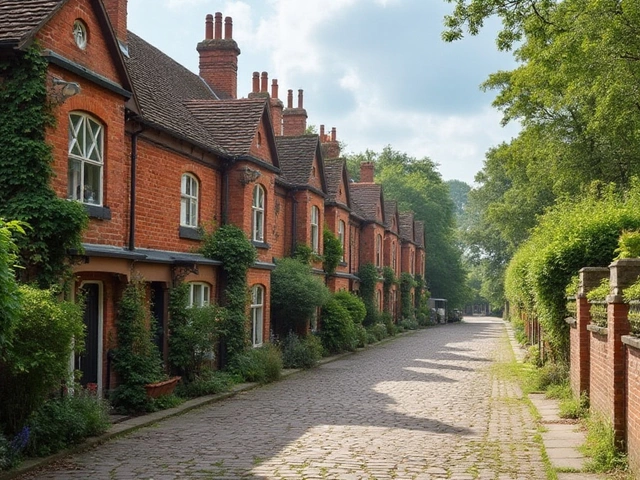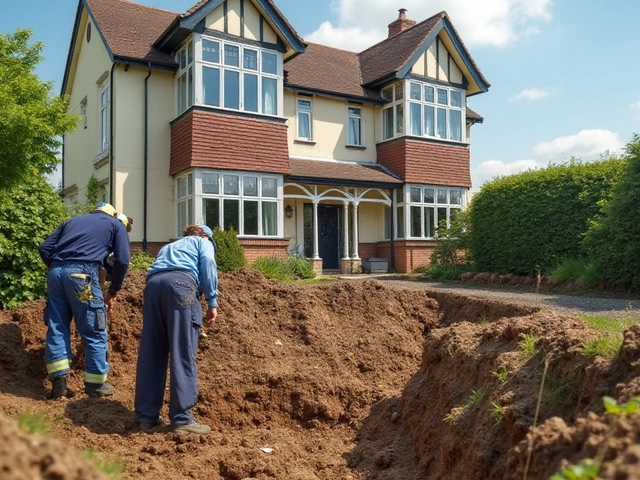Getting a new home built is an exciting journey, but with it comes the fear of seeing those dreaded cracks form. Don't worry—you're not alone in this. Let's dive into what you can do to keep your new build looking pristine for years to come.
First off, understanding what causes cracks is like knowing your enemy. It's usually a mix of settling, the environment, and sometimes just bad luck with the materials. But hey, knowing is half the battle.
When you're in the planning stages, picking the right materials is crucial. Think of it like baking a cake—the key ingredients make all the difference. Good quality concrete and properly treated timber can save you from a world of stress down the line.
- Understanding the Causes of Cracks
- Choosing the Right Materials
- Effective Construction Practices
- Maintenance Tips After Completion
Understanding the Causes of Cracks
So, what's really making those pesky cracks show up in your new build? Most of the time, it boils down to a combo of natural forces and construction choices. It's not just bad luck! Knowing these causes can help you take the right steps to prevent them.
Foundation Settling
One of the major culprits is foundation settling. Every new building goes through some settling as the ground compresses under its weight. This is normal, but if the soil wasn't prepared correctly, or if it’s too wet or too dry, then excessive settling happens, causing those irritating cracks.
Moisture Levels
Moisture is another big player. Both too much and too little can wreak havoc on your home. When the soil under your house gets too dry, it shrinks. When it's too wet, it expands. This constant movement can stress your home, leading to cracks. Keeping moisture levels balanced is key.
Temperature Changes
Ah, the weather—something we Canadians know all too well. Rapid temperature fluctuations cause materials to expand and contract. Over time, this can create stress in walls and foundations, especially if the construction materials weren't chosen to handle the specific climate of your location.
Poor Quality Materials
Using poor quality materials is a sure way to see cracks forming sooner. Cheap concrete or untreated wood may save some cash upfront, but they often don't cope well with environmental stressors. Investing in proper materials is like taking out insurance on your home.
| Cause | Effect |
|---|---|
| Foundation Settling | Leads to uneven support |
| Moisture Levels | Causes soil expansion/contraction |
| Temperature Changes | Materials expand/contract |
| Poor Quality Materials | Lack of durability |
Now that you're clued up on what causes cracks, staying ahead of these problems is much more straightforward. With a bit of know-how and the right approach, you'll keep your new build crack-free.
Choosing the Right Materials
When it comes to preventing cracks in your new build, the materials you choose play a big role. Think about it as building a strong foundation for a good relationship. If you start well, you avoid a lot of frustrations down the road.
Concrete That Lasts
Concrete, the backbone of most houses, varies a lot in quality. Opt for a mix that's appropriate for the climate you’re in. If you're in a place that's wet and cold, like Halifax, ask for a mix that’s resistant to freezing and thawing cycles. It matters more than you’d think!
Timber That Stands the Test of Time
When choosing wood, go for treated timber to avoid absorption of moisture, which leads to expansions and contractions—crack central! Remember the keyword here is 'treated' because naturally, wood just loves soaking up all the moisture it can find.
Insulation and More
Also, investing in good insulation materials helps maintain a stable indoor temperature, reducing the stress on the walls. Inconsistencies in temperature can cause materials to expand and contract, leading to—you guessed it—cracks!
Sometimes, throwing in a few extras can really pay off. Consider using fiber-reinforced products which are known for improved tensile strength and durability. They're a bit on the higher end, price-wise, but the investment speaks for itself when the walls are still intact years later.
If you're really diving deep into the world of new builds, check out these numbers on material longevity compared to costs:
| Material | Average Lifespan (Years) | Cost (Per m2) |
|---|---|---|
| Standard Concrete | 30-50 | $10 |
| High-quality Concrete | 50-100 | $15 |
| Treated Timber | 40-60 | $20 |
| Fiber-Reinforced Material | 70-100 | $25 |
Make choices that align not only with your budget but also with the long-term vision of your dream home. Sure, it might take a slight stretch of the wallet now, but it'll pay off with fewer headaches down the line.
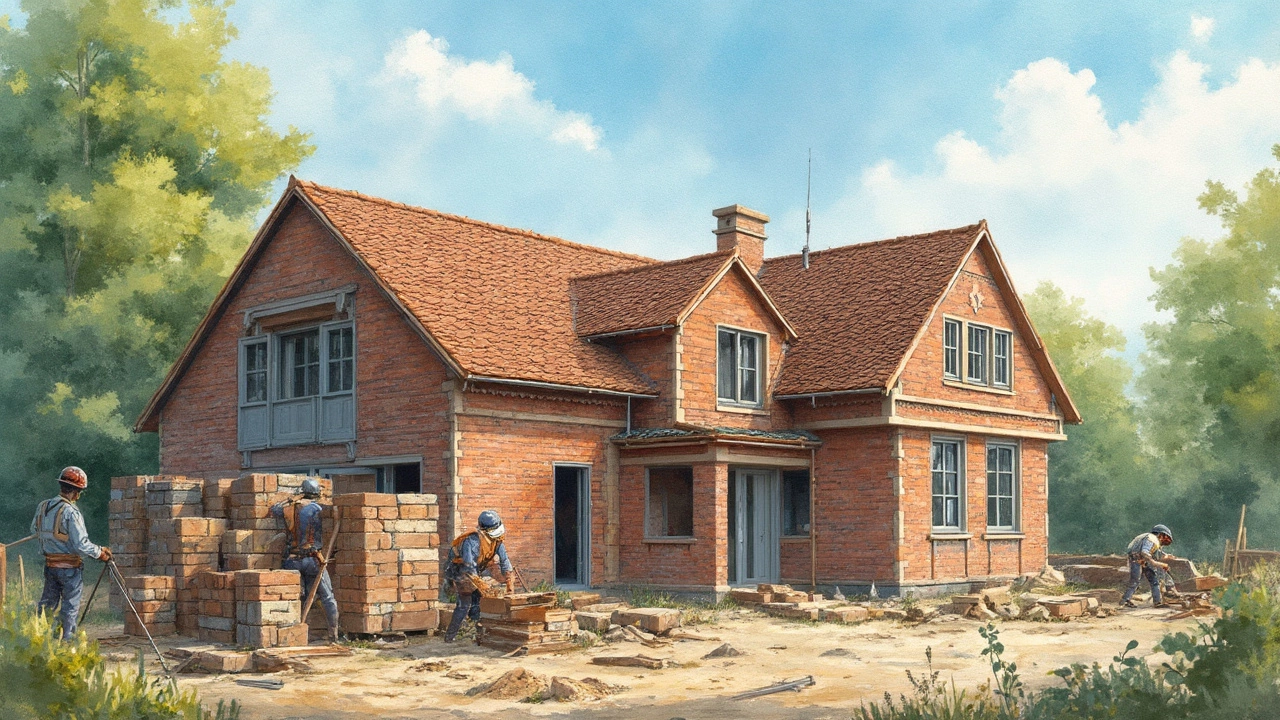
Effective Construction Practices
When it comes to building a new build, sticking to effective construction practices can be the difference between a home that's sturdy and one that's prone to cracks. It's all about smart planning and diligent execution.
Slope Management
The lay of the land can be a huge factor. Managing slope and soil stability should be a top priority. Make sure your builder assesses and adjusts the plot to ensure water drains properly. Improper drainage is a common culprit for structural issues leading to cracks.
Foundation Focus
The foundation is quite literally the base of everything. Using a sturdy and uniform foundation material is key. Reinforced concrete is often the go-to; it’s reliable and holds up well under pressure. Make sure the foundation is set on solid ground and has time to cure properly - don’t rush this critical step.
Temperature Controls
Believe it or not, temperature changes can cause materials to expand and contract, leading to cracks. For instance, using temperature control methods like heated tents or covering concrete in cold weather can help prevent these issues. This ensures that the materials don’t undergo too much stress during the curing process.
Structural Reinforcement
Adding reinforcement like steel bars or mesh in walls and flooring goes a long way. It’s basically giving your structure some backbone. This helps in spreading loads and reducing the risk of cracks forming over time. Good reinforcement is less visible but a crucial part of solid home building.
Quality Control
Implement a rigorous quality control process. Regular inspections by qualified personnel can catch potential issues early on. These inspections not only cover the work done but also ensure that the materials used meet necessary standards.
| Factor | Impact on Cracks |
|---|---|
| Slope Management | Prevents water logging |
| Foundation Quality | Reduces settling issues |
| Temperature Control | Prevents material stress |
| Structural Reinforcement | Distributes load evenly |
Each of these steps might seem small on their own, but together, they form a comprehensive approach to preventing cracks. Keeping an eye on these practices during the construction phase can save heaps of trouble later on. So, talk to your builder, ask questions, and make sure these elements are part of the plan.
Maintenance Tips After Completion
Alright, so your new build is done, and it looks amazing. But what's next? Just because the construction is over doesn't mean you can kick back entirely. Regular maintenance is key to keeping it in tip-top shape and preventing pesky cracks from appearing.
Regular Inspection
First off, make it a habit to walk around your home every few months. Look for small gaps or signs of wear before they become a bigger deal. Pay special attention to areas around windows, doors, and the foundation, where cracks tend to show up.
Control Moisture Inside and Outside
Moisture is like kryptonite for any home, especially new builds. Too much can lead to swelling and eventually to cracks. Make sure your gutters are clean and well-maintained, as blocked gutters can lead to water buildup. Indoors, use dehumidifiers in damp areas like basements or bathrooms.
Temperature Fluctuations
Temperature changes can also mess with your home. In Canada, where we say hello to all four seasons, temperature control is vital. Keep your indoor climate steady throughout the year to minimize material expansion and contraction that can lead to those dreaded cracks.
Repair Small Cracks Promptly
Discover a minor gap or crack? Don't panic! It's pretty normal. The key is to fix it as soon as possible. You can use sealant or filler for small openings, which you can find at most hardware stores. If you're unsure, it might be worth hiring a pro to ensure it's done right.
Check Foundation Annually
The foundation is like the backbone of your home. Conduct an annual check for settling or shifting, which can cause cracks if not caught early. It's worth bringing in an expert for a thorough inspection to keep everything level and sturdy.



